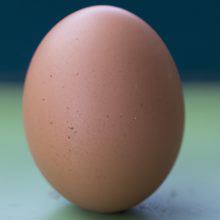The History and Characteristics of White Leghorn Chickens

If you’ve ever wondered about the fascinating history and unique characteristics of White Leghorn chickens, prepare to be enthralled. From their origins in Italy to their delightful white plumage, these chickens have a storied past and distinctive features that set them apart. Whether you’re a poultry enthusiast or simply curious about the world of avian wonders, you’ll find yourself captivated by the rich history and intriguing traits of the White Leghorn chickens. So, sit back, relax, and allow yourself to be transported into the world of these magnificent birds.
History
Origins
The White Leghorn chicken breed originated in Italy and was named after the Italian port city of Livorno, which is also known as Leghorn. The breed is believed to have descended from Mediterranean chickens that were brought to Italy by the Phoenicians around 500 BC. These chickens were known for their hardiness and ability to lay a large number of eggs.
Arrival in the United States
White Leghorns were first brought to the United States in the early 1800s. They were prized for their egg-laying capabilities and quickly gained popularity among farmers and poultry enthusiasts. The breed’s ability to adapt to a variety of climates, as well as their high productivity, made them a valuable addition to backyard flocks across the country.
Popularity and Commercialization
During the late 19th and early 20th centuries, White Leghorns experienced a surge in popularity and became a staple in commercial egg production. Their efficient feed-to-egg conversion ratio and consistent egg production made them the preferred breed for large-scale farms and hatcheries. Advances in transportation and refrigeration also contributed to the breed’s commercial success, as their eggs could be shipped across the country and even exported internationally.
Characteristics
Appearance
White Leghorns are known for their sleek and athletic appearance. They have a slim and elegant body shape with a long neck, powerful legs, and a well-developed breast. Their feathers are tight and close-fitting, giving them a streamlined appearance.
Size and Weight
White Leghorns are relatively small chickens compared to other breeds. The adult males, called roosters, typically weigh between 5 to 6 pounds, while the adult females, known as hens, usually weigh around 4 to 5 pounds. Their compact size makes them well-suited for backyard flocks, where space may be limited.
Feather Color
As their name suggests, White Leghorns have pure white feathers. This clean, crisp color adds to their overall aesthetic appeal and makes them stand out in a flock. Their white plumage also reflects sunlight, helping to keep them cool during hot summer months.
Comb Types
White Leghorns have a distinct comb called a single comb. This comb is large and upright, with a series of evenly spaced serrations. The comb plays a role in regulating the chicken’s body temperature and can indicate its overall health. A vibrant and erect single comb is often associated with a healthy and vigorous bird.
Egg Production
One of the standout characteristics of White Leghorns is their exceptional egg-laying ability. These chickens are known to be prolific layers, often producing more than 280 large white eggs per year. Their high egg production makes them a popular choice for those who value a consistent supply of fresh eggs.
Temperament
White Leghorns have a lively and spirited temperament. They are generally active and alert, always on the lookout for potential dangers or sources of excitement. While they may be wary of humans at first, with regular handling and socialization, they can become quite friendly and sociable.
Temperament
Active and Energetic
White Leghorns are highly active and energetic birds. They love to roam and explore, so providing them with ample space to forage and stretch their wings is important. Their remarkable agility and speed make them excellent flyers, capable of flying over fences and escaping confinement if not properly contained.
Social and Friendly
Despite their active nature, White Leghorns are also known for their sociability and friendliness towards humans. With regular handling and gentle interactions, they can become quite tame and even enjoy being held or carried. However, as with any chicken breed, individual personalities can vary, and some White Leghorns may be more independent than others.
Independent
White Leghorns, while sociable, also have a streak of independence. They are highly curious and often display a sense of adventure, exploring their surroundings with confidence. This independent nature can make them excellent foragers, as they have a knack for finding insects and other small creatures in the yard.
Alert and Watchful
White Leghorns are naturally vigilant and always on the lookout for potential danger. Their watchful nature makes them excellent sentinels, as they will sound the alarm when they sense any potential threats. This level of awareness and vigilance can help keep your backyard flock safe from predators.
Suitability for Backyard Flocks
Hardiness
White Leghorns are known for their hardiness and ability to adapt to a variety of climates. They can tolerate both hot and cold temperatures, making them suitable for backyard flocks in different regions. However, it is important to provide them with appropriate shelter and protection from extreme weather conditions.
Egg Production
If you’re looking for a breed that excels in egg production, White Leghorns should be at the top of your list. Their ability to lay a large number of eggs consistently throughout the year is a significant advantage for backyard flock owners who want a steady supply of fresh eggs.
Low Maintenance
White Leghorns are relatively low-maintenance chickens. They have a strong immune system and are generally healthy, reducing the need for frequent veterinary care. They also require minimal grooming, as their feathers are self-maintaining and rarely require pruning or cleaning.
Compatibility with Other Breeds
White Leghorns generally get along well with other chicken breeds. Their friendly and sociable nature allows them to integrate smoothly into existing flocks, provided that proper introductions and introductions are made. However, it is always important to monitor flock dynamics and intervene if any aggression or bullying occurs.
Special Considerations
Prone to Flight
Due to their high energy levels and agility, White Leghorns have a strong propensity for flight. This can be a consideration for backyard flock owners, as they may need to secure their enclosures with taller fences or netting to prevent the birds from escaping.
Need for Adequate Space
White Leghorns thrive when they have access to ample space. They are active foragers and enjoy the freedom to explore their environment. Providing a spacious outdoor area or free-ranging your White Leghorns can contribute to their well-being and overall happiness.
High Energy Levels
White Leghorns have a natural abundance of energy that needs to be channelled appropriately. Engaging them in activities such as foraging, dust bathing, or providing them with suitable toys and environmental enrichment can help them release their energy in a productive and positive manner.
Potential Aggression
While White Leghorns are generally friendly, there can be instances of aggression, especially among roosters or during the mating season. It is important to monitor their behavior closely and separate any aggressive individuals to maintain a harmonious and peaceful flock.
Pros and Cons
Pros
- Exceptional egg-laying ability
- Active and energetic nature
- Sociable and friendly temperament
- Hardy and adaptable to different climates
- Low maintenance requirements
Cons
- High flight propensity
- Need for adequate space and freedom to forage
- Requires outlets for their high levels of energy
- Potential for aggression, especially among roosters
- May be more independent compared to other breeds
Popular Varieties
Single-Comb White Leghorn
The Single-Comb White Leghorn is the most common variety of White Leghorn chickens. It is recognized for its striking white plumage, upright single comb, and exceptional egg-laying capabilities. This variety is often preferred by backyard flock owners and commercial farms alike.
Rose-Comb White Leghorn
The Rose-Comb White Leghorn is a variation of the White Leghorn breed. It features a unique rose-shaped comb, which is smaller and denser compared to the single comb variety. Rose-Comb White Leghorns are known for their high egg production and are equally popular among poultry enthusiasts.
Famous Leghorns
Foghorn Leghorn (Looney Tunes)
Foghorn Leghorn, a popular character from the Looney Tunes cartoons, is a fictional White Leghorn rooster known for his distinctive Southern accent and jovial personality. With his large white crest, prominent comb, and lively demeanor, Foghorn Leghorn has become an iconic representation of the breed in popular culture.
Leghorn Chicken (Disney’s “Robin Hood”)
In Disney’s animated film “Robin Hood,” there is a character named Leghorn Chicken who is portrayed as a member of Robin Hood’s band of merry men. This portrayal of Leghorn Chicken highlights the breed’s distinctive appearance and contributes to the recognition of White Leghorns among audiences of all ages.
Breeding and Care
Breeding Process
The breeding process for White Leghorns involves selecting healthy and genetically robust individuals for mating. Careful consideration is given to aspects such as egg production, temperament, and conformity to the breed standard. Proper record-keeping and attention to detail are essential to maintain and improve the breed’s desirable characteristics.
Care and Maintenance
White Leghorns require basic care and maintenance to thrive. This includes providing them with a clean and suitable living environment, regular access to fresh water and nutritious feed, and protection from predators. Routine health checks and vaccinations, as recommended by a veterinarian, are also crucial to their overall well-being.
Feeding Requirements
White Leghorns have relatively high energy needs due to their active nature and exceptional egg-laying capabilities. A balanced diet consisting of high-quality layer feed that is rich in protein and essential nutrients is essential to support their overall health and maximize egg production. It is also beneficial to supplement their diet with fresh greens, fruits, and vegetables to provide variety and additional vitamins.
Health Considerations
While White Leghorns are generally healthy and hardy, they can still be susceptible to common chicken ailments such as respiratory infections, parasites, and nutritional deficiencies if not properly cared for. Regular observation, cleanliness, and providing a balanced diet are vital in preventing and managing potential health issues. Consultation with a poultry veterinarian can provide additional guidance on preventative measures and treatment options.
Conclusion
White Leghorn chickens have a rich history and unique set of characteristics that make them a valuable addition to backyard flocks. From their origins in Italy to their evolution into a highly productive and sociable breed, White Leghorns have captured the hearts of poultry enthusiasts around the world. With their exceptional egg-laying abilities, active temperament, and adaptability to different climates, it’s no wonder that these chickens continue to be a popular choice for both hobbyists and commercial farmers alike. By providing them with proper care, nutritious feed, and adequate space to express their natural behaviors, you can enjoy the many benefits that come with raising White Leghorns in your backyard.



